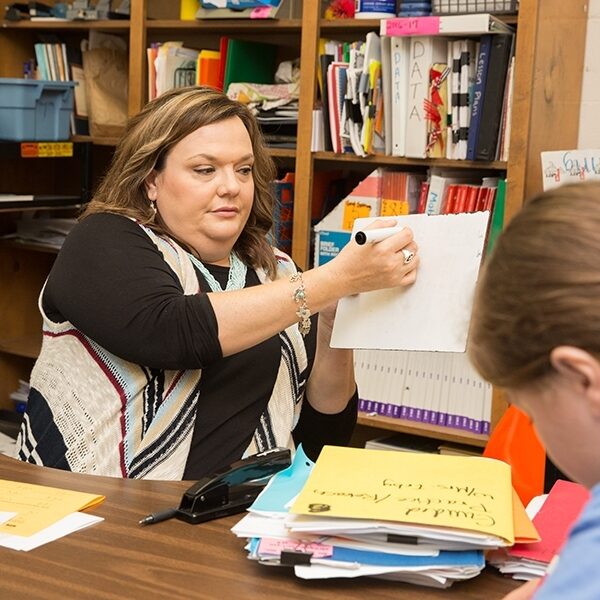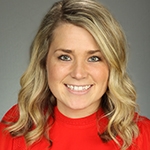
This blog was originally published on EdSurge.
In 2017, at the end of our third year of implementing personalized learning at Dallas ISD, our central personalized learning team conducted a series of stepback meetings with school leaders. We wanted to learn their biggest concerns around implementation, along with what was and wasn’t working for them. One thing consistently bubbled to the surface in these meetings: The way we were exposing teachers to personalized learning was more focused on the what and less about the how. This “a-ha” moment quickly sent us back to the whiteboard to redesign the overall onboarding experience.
Personalized learning is a one-size-fits-one approach to instruction that taps into each student’s strengths, needs and interests to customize learning. In five years, we’ve grown from five to 20 “wall-to-wall’ schools working to leverage personalized learning to meet student needs.
From the stepback meetings we conducted, it became clear there were two main issues with onboarding. First, schools that had been involved in the initiative from the beginning—and that were about to enter their fourth year of personalized learning in the fall—needed more support for onboarding teachers who were both new to the school or new to personalized learning in general. And schools that were starting their own personalized learning programs for the first time were eager to jump right in but grappled with planning as they were still becoming experts themselves.
We quickly realized there was a need across all schools to host a teacher onboarding experience specific to personalized learning. After it was announced that the U.S. Men’s Soccer Team would not be playing in the World Cup that summer, we settled on the idea of hosting our very own Personalized Learning World Cup. Three weeks after we sent our registrations, we had over 100 teachers register and commit to spending 16 hours with our team for onboarding. Teachers began by exploring the why and what for personalized learning by focusing on blended learning as one of the first paths to personalization. On the second day, teachers collaborated in grade-level clusters to help prepare for the final game, an exhibition of learning that showcased their individual plan for personalized learning the first six weeks of school.
Make Onboarding Stick
This past summer we hosted our second annual cohort-wide onboarding for almost 300 teachers playing off a cruise ship theme. Teachers and leaders opted-in to “ports-of-call” around areas they needed to learn more about. Teachers had the opportunity to begin their PL Cruise by focusing on the why and what for personalized learning by learning how to snorkel through the caves and corals of blended learning. On day two of the PL Cruise, teachers leveraged their wayfinding skills to “climb a waterfall” by opting into sessions aligned to every phase of our Personalized Learning Coaching and Development Rubric, which covers topics such as assessment, instruction and providing useful feedback.
Hosting a three-day PL Cruise allowed us to deepen practices for teachers and strengthen connections across cohort schools (and teachers helped document their learning using the hashtag #PLCruise).
It turns out, this need for targeted, experiential teacher onboarding is not unique to Dallas. We’ve heard from our colleagues in other districts, our peers in national innovation networks, and from attendees at education conferences around the county that effectively onboarding teachers to join innovative learning models is critical to a program’s success. Time is limited, and teachers may only have a few short weeks or days before they’re asked to kick off the year. Couple this with the fact that many teachers often lack exposure to and experience with teaching in innovative models, such as blended and personalized learning, which can lead to periods of stumbling and challenge as they adjust. And so, schools, districts, and networks are faced with the complex task of designing effective onboarding, often needing to build resources from scratch to get new professionals up to speed.
In the spirit of sharing what we have learned so far, here are my three recommendations for improving teacher onboarding:
Establish a Common Language and Baseline
At Dallas ISD, we leverage our PL Coaching and Development Rubric to help us speak a common language with our teachers and school leaders. This rubric defines the teacher and student actions that help create a personalized learning environment and is broken down by suggested phases for implementation. When everyone is clear about what blended and personalized learning looks like in action, understands what is expected, and where there is autonomy to make it your own, we all do better.
Design Experiences, Not Professional Development
“We rarely create something different until we experience something different.” I’ve had this quote from the “Innovator’s Mindset” by George Couros on a post-it on my laptop for years. It serves as my daily gut-check in everything I do. One of the most important lessons I’ve learned is that if we want teachers to create personalized environments, they first have to learn in a similar environment. In other words, you have to be a personalized learner before you can become a personalized teacher.
Thus, we leverage experiential learning to provide teachers an opportunity to learn about blended and personalized learning in a differentiated way and most importantly, build empathy for what it feels like to be a learner in a personalized learning environment. In action, this might look like teachers reflecting on individual growth goals and choosing the best-fit learning experiences to meet their needs from many options provided. Our team often relies on this type of blended flex model to support teachers by leading multiple mini-workshops, choice boards with videos and resources for self-exploration, and one-on-one coaching opportunities.
Build Muscle for Rapid Prototyping
When transitioning to new innovative learning models, we’ve found that one of the most important things we can equip our teachers with is the muscle to prototype. A prototype is often something scrappy, with the purpose of testing to learn and gather quick feedback from the end-user before putting an idea into implementation. When we close out onboarding experiences, we ask teachers to participate in an Exhibition of Learning, where they build a quick prototype for something they’re looking to change or try out in their classroom. When prototyping becomes a habit, teachers begin to build stamina to keep iterating, especially when something doesn’t work the first time.
So where else can you find good ideas for onboarding? Here are a few ideas:
- Spend more time in classrooms with students and teachers (and principals), learning alongside them to find out what’s working and what’s not. Use these empathy interviews to inform your onboarding training.
- Check out The Learning Accelerator’s recent Teacher Onboarding Problem of Practice series for real-world examples of effective onboarding for innovative learning models.
- Dig into this book by the Heath Brothers, “The Power of Moments: Why Certain Experiences Have Extraordinary Impact,” for tips on designing experiences with extraordinary impact.

